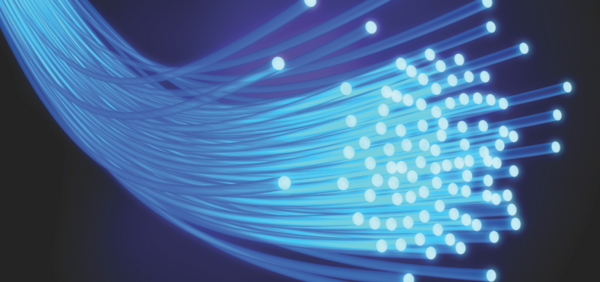
With all the hype about fibre optics floating around the Internet, especially about Google’s gigabit broadband services, many may be wondering exactly why fibre optics are so important. This is surely a fair enough question to mind. In reality, fibre optics offers many benefits to both customers and network architects. Fibre Optic uses special fibres that are able to perform transfers of pure light. Just like wires, data transfer starts on one end and is transferred all the way to the other end of the cable where it is decoded.
More bandwidth
Fibre provides much greater bandwidth than copper and has a standard operating limit of up to 10 Gbps. Although this limit is not achievable till now, these speeds can be realized in future proposals and ratifications. In addition, fibre optic cables carry more information with greater accuracy than copper wire. This is why telephone and cable TV companies are making an attempt to convert to fibre.
Less signal degradation
Degradation in light occurs much slower than electricity. This means that more businesses and homes can be served. Anyone who can remember the time when DSL services started, can easily recall the problems caused by distances involved. If you are not living practically next door to the DSL network node, you were out of luck. Definitely, things got better with time, but with fibre optics, this problem was resolved from day one.
Fibre optics tend to be more robust
Too much pressure on a set of wires will cause them to melt into a fine slag, and that’s what exactly happens when too much is demanded of an old wiring. Because fibre optics carry light, there is a much smaller footprint of heat in comparison to electricity. This is particularly true for light that is used in fibre-optic system, which is much less powerful than the UV light from the sun.
Security
Your information is safe with the fibre cable as it doesn’t emit signals and is very hard to tap. In case any cord is tapped, it is very easy to monitor as the cable leaks light. Fibre also allows you to put all the electronics and hardware in a central location, instead of having wires all over the building.
Design
Fibreglass is thin, lightweight and much more durable than copper. In addition, fibre optics carry information that is up to 11 times more than the copper cable. The smaller size makes it easy to handle, and it usually takes lesser space in cable ducts. While fibre is even more difficult to terminate than copper, advances in connector technologies have made termination easier. Apart from this, fibre is actually easier to test than copper cable.
Fibre is a Green Technology
Have you started to believe that sending information through electrical cables is wasteful? If yes, then you would be right as data that is sent over the wire takes dozens of times more energy than what it takes to transmit light signals.
Future
Fibre optics is affordable today. As the cost of electronics has fallen in recent times; optical cable prices are still low. In many cases, solutions through fibre cables are much cheaper than copper. As the demand for bandwidth is increasing rapidly, fibre will continue to play an important role in the long-term success of more reliable communications.
Amanda Revie writes about all things tech and social media. If you’d like to find out more click here for multimode fibre optic cable advice and tips.















